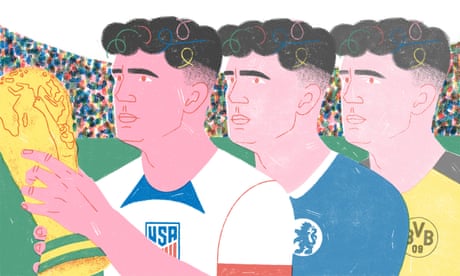
The midfielder looks liberated when he steps on to the field for his country. How he handles expectation will be crucial to his team’s chances at this World Cup
In America, the French actor Isabelle Huppert once said, Europe disappears: “They have everything. They don’t need anything. Deep down to them we are a sort of elegant Third World.” The history of American sport reads as one iteration of this blazing autonomy: from the development of baseball as a derivative of regional English games like stoolball and tut-ball to the evolution of rugby union into American football and the creation of basketball from the manipulation of a soccer ball indoors, the US has specialized in fashioning its own kind of sporting modernity out of Europe’s raw cultural materials, often consigning these older sports to the scrapheap of national memory.
But globalization – the great success story of American free-market economics – and the unstoppable rise of football have, in recent decades, forced the US to confront a discomfiting reality: in the world’s most popular sport, the global hegemon remains a middleweight at best. The country that has everything now finds that it doesn’t: emerging (almost) every four years from a middling confederation into the glare of the World Cup, the spotlight deflected for once towards other countries, the America that wants for nothing – so confident, so culturally self-reliant – now finds itself in need. It needs to prove that it has footballing muscle equal to its muscle in every other domain. It needs to show that it belongs. And it needs, perhaps more than anything, to convince the world that it can produce a player in the men’s game equal to Haaland, Neymar, Salah, or Mbappé.




